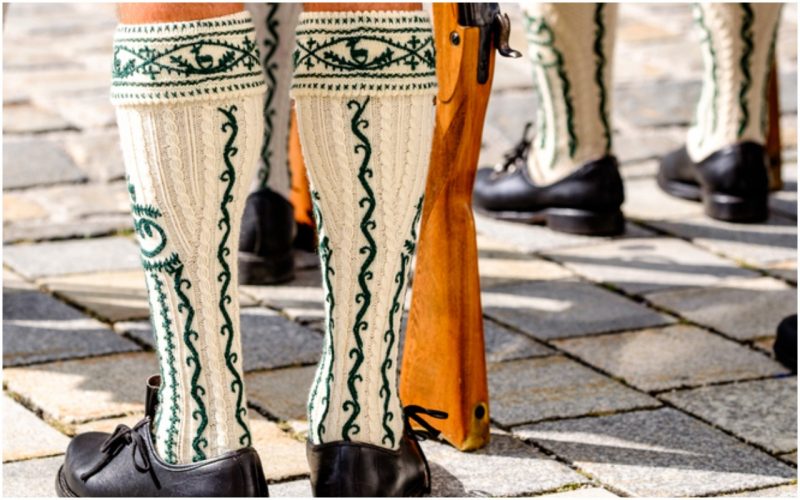Although nowadays socks seem to be nothing more than just a simple detail of one’s outfit, the fact is that they have come a long way and dramatically evolved over the centuries. Socks are considered by many as being the oldest type of clothing to have ever existed, dating back to the Stone Age when our ancestors first started using animal skin for the purpose of covering their feet and ankles in order to provide much-needed warmth and comfort.
The oldest known surviving pair of socks was discovered in the city of Oxyrhynchus, Egypt. They date back to 300-500 A.D. and were created by needle-binding. Today, these strange looking ancient socks are on display at the Victoria and Albert Museum in London. The museum explains that:
“The Romano-Egyptian socks were excavated in the burial grounds of ancient Oxyrhynchus, a Greek colony on the Nile in central Egypt at the end of the 19th century. They were given to the Museum in 1900 by Robert Taylor Esq., ‘Kytes,’ Watford. He was the executor of the estate of the late Major Myers and these items were selected among others from a list of textiles as ‘a large number of advantageous examples.”
It appears that humans have embraced the benefits of wearing socks since the earliest cultures and civilizations, including people of Ancient Greece. The famed Greek poet, Hesiod, gives us one of the first written accounts of the importance of keeping our feet warm by using “piloi,” ancient type of socks made from matted animal hair.
In his didactic poem entitled Works and Days, Hesiod advises his brother Perses to protect himself by using this particular type of ancient socks: “Around your feet, tie your sandals made from brutally hunted oxen skin and, under these, dress them in piloi.”
They came, they saw, they wore socks with sandals. As you might have already guessed, we are talking about the Ancient Romans. Several years ago, an archaeological dig in North Yorkshire brought archaeologists to a conclusion that Roman legionnaires wore socks with sandals. Although one can rarely see an Ancient Roman sculpture that features socks, the fact is that Ancient Romans, similarly to the Ancient Greeks, also wore socks for protection against cold weather.
While Ancient Greeks and Romans used socks for functional purposes, among Europeans of the 5th century A.D., socks become known as puttees and were usually worn only by “holy” people to symbolize purity.
Status symbols, both financial and cultural, have existed for quite a long time throughout our history with every era being defined by a different one. We all know the status symbols of our own era, but one might be surprised to find out that around 1,000 years ago a rather strange object was considered a mark of social standing, and that was, believe it or not, a pair of colored socks.
It was not until 1000 A.D. that socks became a prominent object in everyday life and a symbol of wealth among the nobility. However, this changed with the invention of the knitting machine in 1589, which made it possible for socks to be knitted far faster than knitting them by hand as people did before. A strange new substance known as nylon was introduced in 1938 which caused a revolution in the entire textile industry and changed sock production forever.
Today in the 21st century, socks can be found for any kind of need, purpose, or style; the only thing that remains a struggle is to keep one pair of socks complete.
